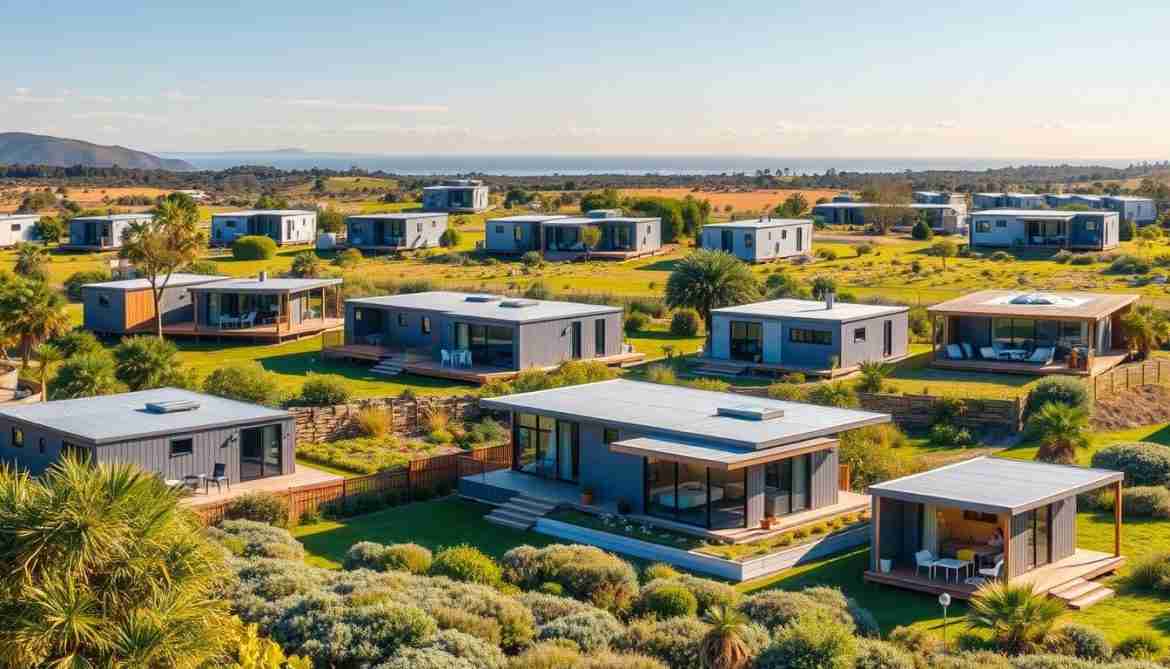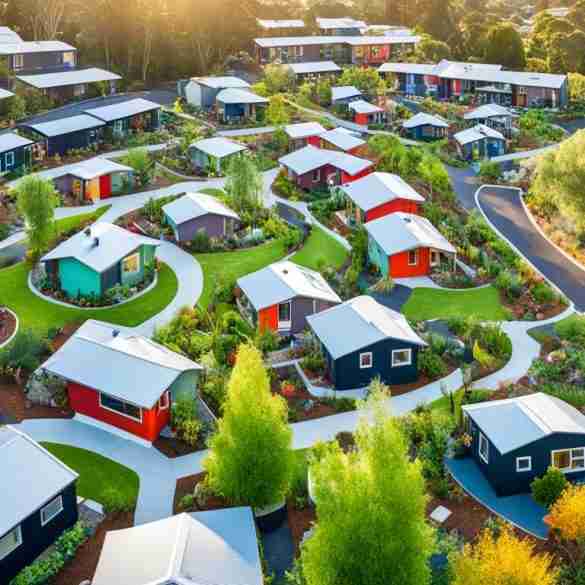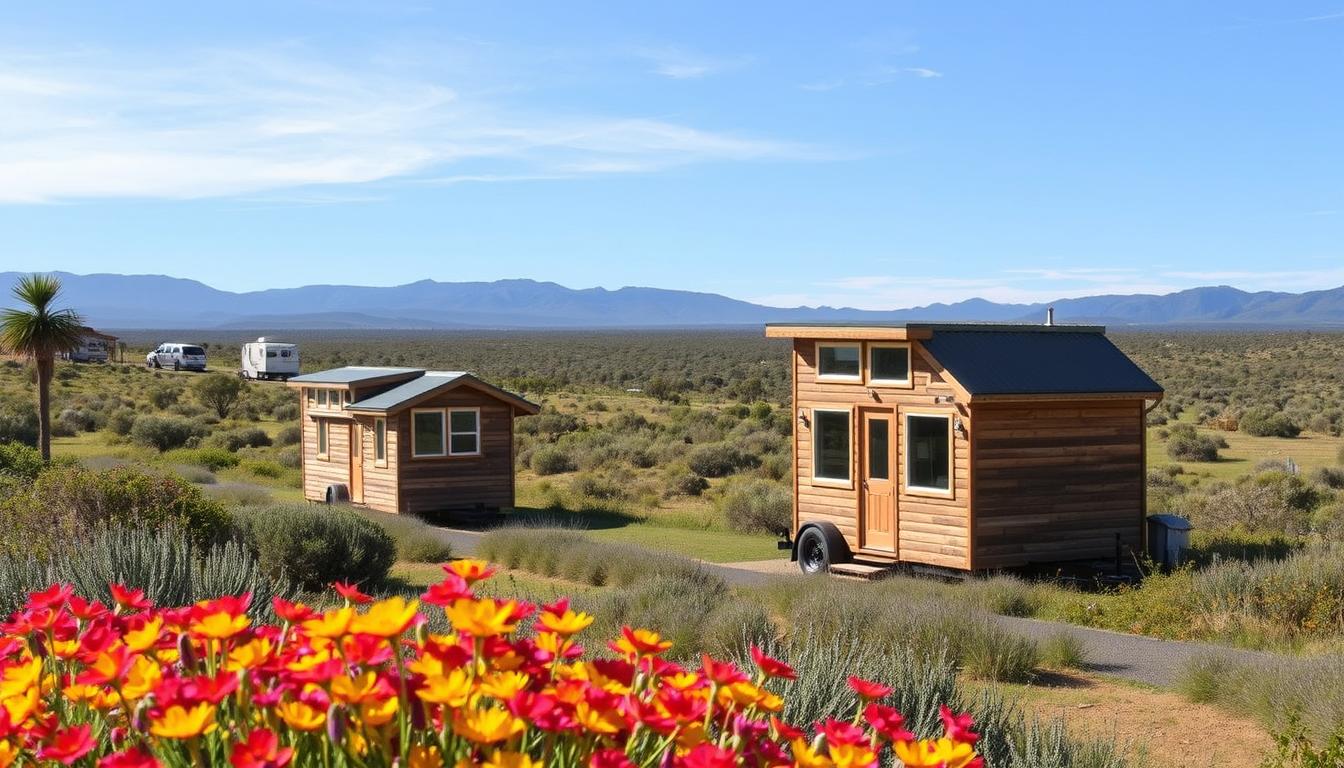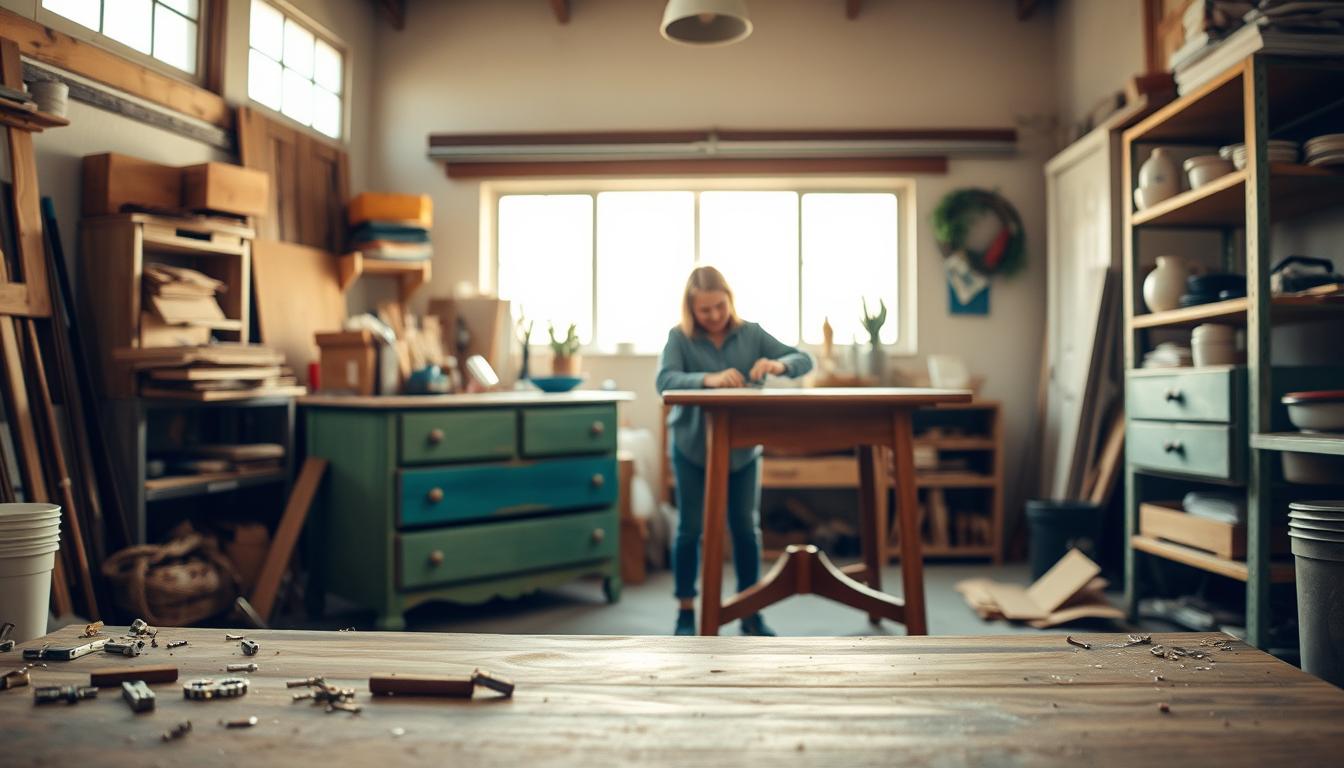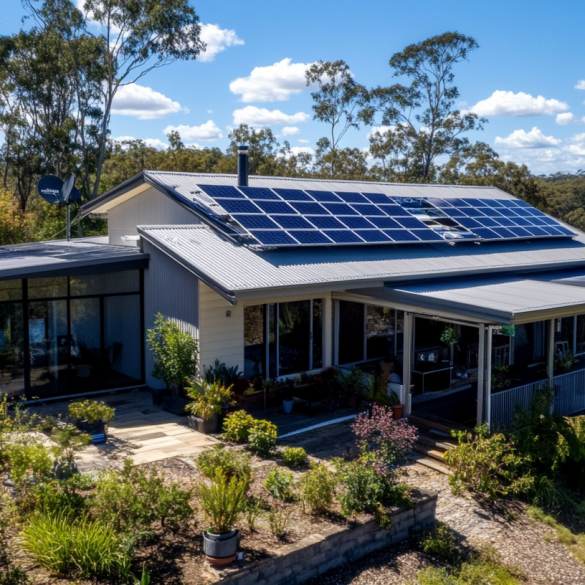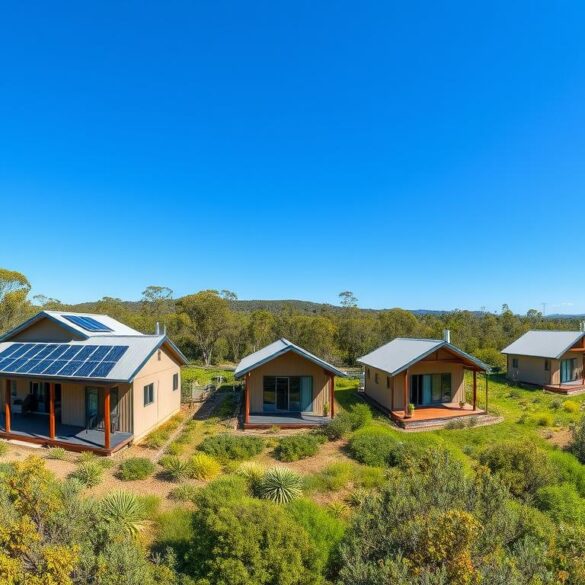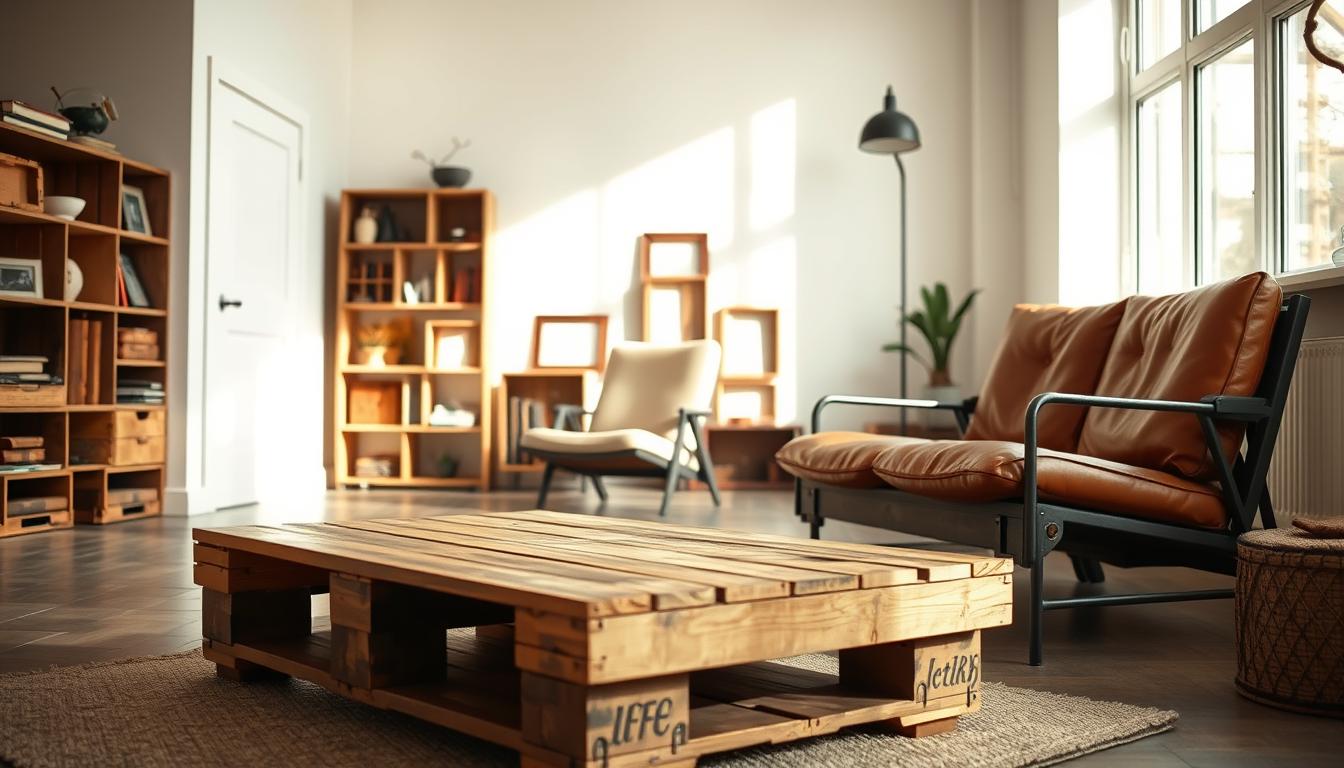Modular homes in Australia are a new way to build houses. They are made in a factory and then moved to a site. About 90% of the work is done before they arrive.
Once there, they are put together and hooked up to services. This makes a complete home.
Building a modular home is fast. In Australia, it can take just 14 weeks. This is much quicker than building a house the old way.
These homes use the same materials and follow the same building rules as regular houses. They are strong and last a long time. They are even stronger because they are made to travel long distances.
Property investors in Australia are starting to see the value in modular homes. The market is growing fast. It’s expected to be a big part of the housing market soon.
Modular homes are good for the environment too. They use less waste and are more energy-efficient. To learn more, check out Sustainable Home Magazine.
Table of Contents
Definition of Modular Homes
Modular homes are built in a factory and then moved to their final spot. They are not built on-site like regular houses. This method is becoming popular in Australia for its cost savings, quick build time, and quality control.

History and Growth of Modular Homes in Australia
Modular homes have been around in Australia since the 1800s. But, they’ve really taken off in recent years. The market share is expected to jump from 3% to 15% by 2025, adding 30 billion AUD to the economy.
Experts say by 2027, half of Australia’s homes could be modular. The government is also backing modular homes, giving PrefabAus a 28 million AUD grant to support prefabrication.
How Modular Homes Are Built
Building modular homes is different from traditional buildings. Modular home manufacturers in Australia make each part in a factory. This ensures quality and saves time and waste.
Once built, the parts are moved to the site and put together. This creates the final home.
| Average Costs for Modular Homes in Australia | Price Range |
|---|---|
| Per square meter | $2,500 – $3,000 |
| 85 m² home (2 bedrooms, 1 bathroom) | $114,000 |
| 152 m² home (2 bedrooms, 1 bathroom) | $148,000 |
| 205 m² home (3 bedrooms, 2 bathrooms, 1 study) | $219,000 |
Types of Modular Homes in Australia
Australia offers many types of modular homes. They fit different lifestyles, budgets, and tastes. Some common types include:
- Transportable homes
- Kit homes
- Prefabricated granny flats and studios
- Custom-designed modular homes
Modular home companies in Australia, like Anchor Homes, have many designs. They range from modern to classic, offering flexibility and customization.
The modular construction industry in Australia is experiencing significant growth, with predictions suggesting that by 2027, one in two homes will be modular.
What Are the Pros of Modular Homes in Australia?
Modular homes in Australia have many benefits. They are cost-effective, built quickly, and focus on quality and sustainability. This makes them a great choice for building a new home.
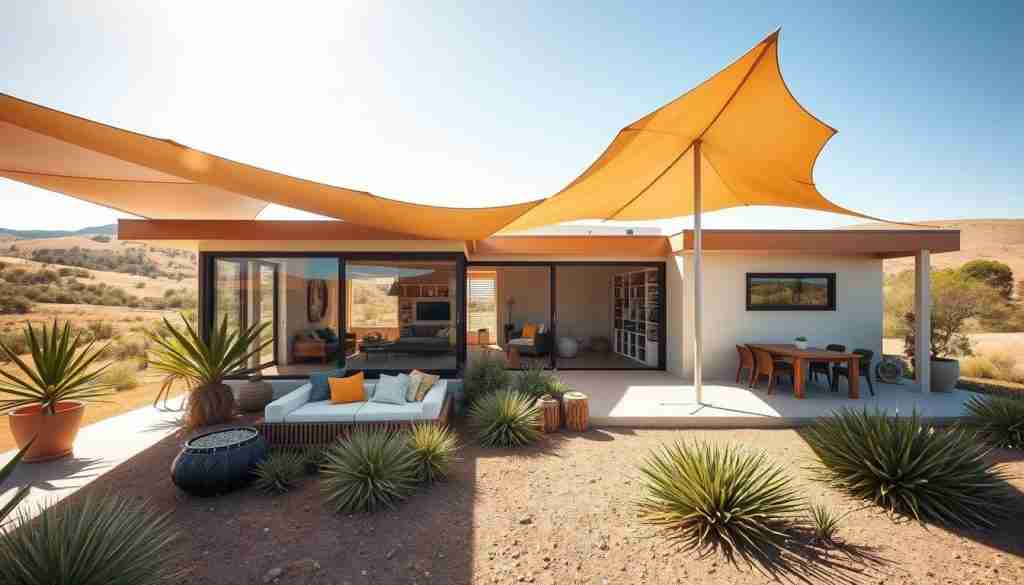
Cost Efficiency
Modular homes are cheaper to build. They cost between $2,500 and $3,000 per square meter. This is 10-15% less than traditional homes.
Speed of Construction
Modular homes are built in a factory. This means they are built faster and less affected by weather. They can be built up to 40% faster than traditional homes.
Quality Control and Precision
Modular homes are built in a controlled environment. This ensures high quality and precision. They are about 90% complete before being installed.
Energy Efficiency and Sustainability
Modular homes are energy-efficient and sustainable. They use features like solar hot water and rainwater harvesting. They also reduce waste and site disruption.
According to Sustainable Home Magazine, modular homes offer a more environmentally friendly alternative to traditional construction, with reduced waste and increased energy efficiency.
Only 3-5% of Australian houses are prefab. However, the modular home industry is growing fast. More people are seeing the benefits of this innovative method.
What Are the Cons of Modular Homes in Australia?
Modular homes have many benefits, but there are also downsides to consider. Knowing the cons can help you decide if a modular home is right for you.
Limitations in Customization
One big issue with modular homes is the limited customization. They are built in a standard way, which can limit your choices. You might not get the exact design you want.
Some builders offer options, but they can’t match traditional builds. This is a problem if you have specific design needs.
Transportation Challenges
Getting modular homes to the site can be hard, especially in cities. Narrow streets and power lines can cause delays and extra costs. These issues can make the price of modular homes go up.
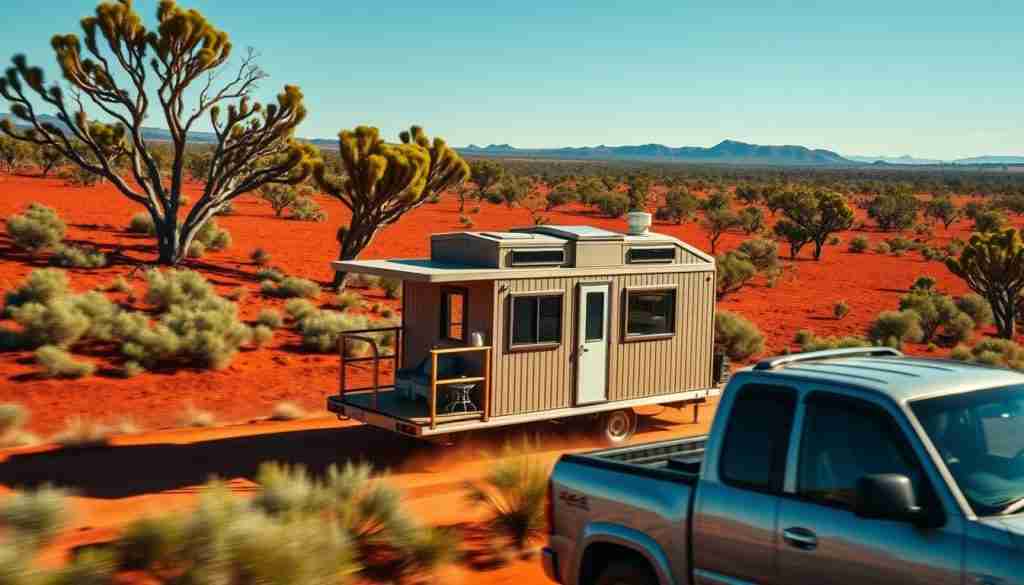
Zoning and Regulatory Restrictions
Before starting a modular home project, check local rules. Some areas might not allow certain materials or methods. This could stop you from building a modular home.
Also, land covenants might not let you use the materials used in modular homes. Dealing with these rules can take time and affect your budget.
Resale Value Concerns
The resale value of modular homes is a big debate. Even though they’re getting better, some people might not want them. This could lower the value of your home.
But, the value also depends on where your home is and how well it’s built. As the market changes, think about how this might affect your home’s value.
“While modular homes offer many advantages, it’s important to carefully consider the potential limitations and challenges before making a commitment. By weighing the pros and cons and conducting thorough research, you can determine whether a modular home is the right choice for your unique circumstances and housing needs.” – Sustainable Home Magazine
Knowing the downsides of modular homes in Australia is key. Think about the limits on customization, getting the home to the site, local rules, and resale value. This will help you decide if a modular home is right for you.
Why Choose Modular Homes Over Traditional Builds in Australia?
Building a new home in Australia has many options. You can choose between traditional builds and modular homes. Modular homes are gaining popularity in Australia for good reasons.
Time to Build: Modular vs Traditional
Modular homes in Australia are built fast. Up to 90% of the work is done in a factory. This means homes are ready in weeks, not months or years.
Cost Comparison
Modular homes are also cheaper. They save money by being built efficiently and wasting less. Sustainable Home Magazine says they can be 20% less expensive than traditional homes.
| Construction Method | Average Build Time | Typical Cost Savings |
|---|---|---|
| Traditional On-Site | 6-12 months | – |
| Modular Construction | 14-16 weeks | Up to 20% |
Flexibility in Design: Modular vs Traditional
Modular homes don’t mean you can’t customize. Builders offer many designs and features. You can find a home that fits your style and budget.
Environmental Impact
Modular homes are also better for the environment. They reduce waste and are energy-efficient. This means they’re good for the planet and can save you money on bills.
“Modular homes are the future of sustainable, affordable housing in Australia. With their speed, cost-effectiveness, and environmental benefits, it’s no wonder more and more Australians are choosing modular construction for their new homes.”
When thinking about a new home in Australia, consider modular homes. They’re fast, affordable, flexible, and eco-friendly. They’re a great choice compared to traditional builds.
Are Modular Homes a Good Investment in Australia?
Thinking about modular homes in Australia? It’s key to look at their long-term value and how they do in the market. These homes could be a smart choice for those looking to invest in property.
Longevity and Durability
Modular homes are built strong enough to last. They can handle the move from factory to site without trouble. This means they need less fixing over time.
The materials and how they’re made add to their lasting power. This makes them a solid choice for homes.
Return on Investment
Modular homes can be a smart investment. In Australia, they cost about $40,000 less than traditional homes. This can make a big difference in profit margins.
They also build faster, thanks to their design. This means less time waiting for the home to be ready.
Market Perception of Modular Homes
Modular homes are becoming more popular in Australia. People like their modern look and feel. This makes them attractive to renters, boosting their value.
Resale Considerations
Modular homes hold their value well. They’re built with new parts, so they don’t break down often. This makes them a good choice for selling later.
| Modular Home Investment Benefits | Traditional Home Investment |
|---|---|
| 0.6% cost savings on construction | Higher construction costs |
| 16-20 week construction timeline | Longer construction periods |
| Reduced maintenance and repair needs | More frequent repairs and maintenance |
| Attractive to quality tenants | Varies based on property condition |
| Appreciating value over time | Dependent on market conditions and property upkeep |
Investment properties, particularly those in desirable locations and equipped with premium amenities, are well-suited for the modular construction approach due to the potential for faster delivery to the market and efficient occupancy by tenants.
In conclusion, modular homes are a great investment in Australia. They save money, last long, and are becoming more popular. Looking into modular homes could be a smart move for your investment portfolio.
How Modular Homes Handle Australia’s Climate Conditions
Modular homes are made to fit Australia’s different climates. They are energy-saving and good for the environment. Companies like Sustainable Home Magazine say modular homes are great for Australia’s weather and landscapes.
Modular Homes for Coastal Areas
Modular homes near the coast can handle salt air and moisture. They use materials that don’t rust and special coatings. This makes them last longer in coastal areas.
These homes also have special features. Like foundations that are higher up and storm shutters. These help protect against floods and strong winds.
Modular Homes in Bushfire Zones
Bushfires are a big risk in many places in Australia. Modular home builders use fire-safe materials and designs. They make homes with non-flammable cladding and fire-proof windows.
These homes also have special ventilation to keep out embers. This makes them safer in fire-prone areas.
Modular Homes for Extreme Weather
Australia’s weather can be very tough. Modular homes are built to handle this. They have strong frames and special windows.
They also have good insulation. This keeps them stable and cozy, even in bad weather.
Insulation and Energy Efficiency in Modular Homes
Modular homes are also good at saving energy. They use insulation like wax to keep the temperature right. This means you use less energy for heating and cooling.
This not only saves money on bills. It also helps the environment.
| Modular Home Advantage | Benefit |
|---|---|
| Corrosion-resistant materials | Withstands harsh coastal conditions |
| Fire-resistant design | Enhanced safety in bushfire zones |
| Engineered for extreme weather | Stability and comfort in challenging climates |
| High-quality insulation | Improved energy efficiency and lower utility costs |
As climate change affects Australia, modular homes are a good choice. They are built to last in tough weather. Working with experienced builders means you get a home that’s safe and energy-smart.
Modular Homes vs Kit Homes: Which is Better for Australians?
Choosing between modular and kit homes in Australia involves several factors. These include construction methods, cost, customization options, and build time. Both types have unique benefits that suit different needs and budgets.
Construction Differences
Modular homes are built in a factory and then moved to the site. This ensures quality and saves time on-site. Kit homes, on the other hand, are pre-cut and need to be assembled on-site. This can be more work for the homeowner or builder.
Cost and Affordability
Both modular and kit homes can save money compared to traditional builds. Savings depend on design, materials, and site conditions. Kit homes often save more because they don’t have design fees and can be built by the owner.
Flexibility and Customization
Modular homes offer more design freedom than kit homes. Modular companies work with clients to create custom plans. Kit homes have design limits but still allow homeowners to choose many details.
Time to Build: Modular vs Kit Homes
Modular and kit homes both build faster than traditional homes. Modular homes can be ready in 12-14 weeks, with installation taking just a day. Kit homes also build quickly, but the assembly time can vary.
| Comparison Factor | Modular Homes | Kit Homes |
|---|---|---|
| Construction Method | Built in a factory, transported to the site | Delivered as pre-cut pieces, assembled on-site |
| Cost Savings | Varies based on design and materials | Up to 30% savings for owner-builders |
| Design Flexibility | High, can be modified to suit preferences | Limited, based on pre-designed plans |
| Build Time | 12-14 weeks, with 1-day installation | Quicker than traditional, but longer than modular |
The choice between modular and kit homes depends on your needs and budget. Modular homes offer customization and efficiency. Kit homes are more affordable and hands-on, requiring more effort from the homeowner.
What Are the Financing Options for Modular Homes in Australia?
Understanding financing options for modular homes in Australia is key. Getting a loan for a modular home might be harder than for traditional homes. But, with the right financing, modular homes can be affordable and practical.
Home Loans for Modular Homes
Lenders in Australia can offer loans for modular homes, but each has its own rules. Bankwest, for example, has changed its construction loans to help with modular homes. They’ve added a third payment stage for buyers and builders. Soon, banks will offer more financial help for relocatable homes, making modular homes more accessible.
Government Grants and Incentives
The Australian government supports the modular home industry with grants. They help projects like PrefabAus to make housing affordable and sustainable. As the modular construction industry grows, more government incentives will likely be available for buyers.
Budgeting for Modular Homes
When planning your budget for a modular home, consider site prep, foundation, utilities, and extra finishes. Modular homes might be cheaper than traditional ones but remember these extra costs. Working with a mortgage broker early can help you find the best financing options.
Hidden Costs to Watch For
Watch out for hidden costs like bushfire or flood protection, council fees, and permits. It’s important to work with your provider and local authorities to avoid surprises. Being informed helps you manage your budget and financing process confidently.

